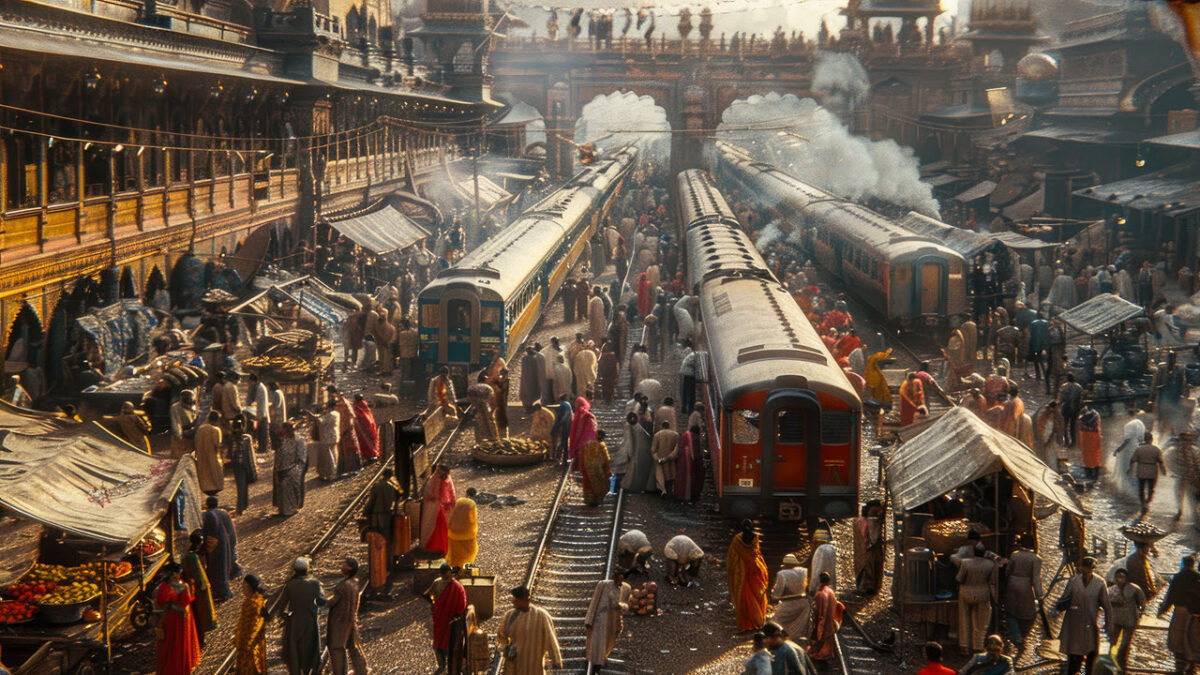
This week, India celebrates Independence Day, and seeing how many celebrations feature Chai as a cultural motif, I thought it was a good time to talk about chai and how tea became Chai. If you – like me – imagined that Chai – our sweet and spiced milky tea – was part of our traditional kitchens, you’d be surprised to know that chai is very much a 20th-century creation. It took less than 100 years for it to become integral to our cultural and culinary story.
As a British colony, India became the site for tea cultivation, but all of this was for export. At the start of the 20th century, the British began to look at India as a potential market for tea. Many lukewarm starts later they went on an aggressive marketing campaign. There was a railway campaign, there was the distribution of free tea samples, there was door-t0-door propaganda, and each of these programmes brought tea into the homes and kitchens of Indians.
And Chai? The Chai story led me to Philip Lutgendorf, who retired as a professor of Hindi and Modern Indian Studies at the University of Iowa, and who is to be credited for research on how Indians became habituated to Chai. He first visited India in 1971. He returned often to research and author books related to the Ramayan, one of our great myths. And Chai, which he tasted on his first day in India, became a beverage he grew to love. And became curious about. It led to a yearlong Fulbright Hays fellowship in 2010, and he came here to research Chai’s cultural history.
What followed was an essay called Making Tea in India, Chai, Capitalism Culture (Thesis Eleven, 2012), where he writes that he could not trace a single creator of the footpathkichai. He pays homage to the “unknown Chaiwalla or Chaiwalli” calling Chai an example of the classic Indian jugaad. Jugaad is a word that describes a demonstration of ingenious innovation, to put it politely. The British tried to teach us the “correct way” to make tea, but that didn’t have the expected outcome. I imagine that those tasked with making tea found the idea of British-style pot tea too fussy and found that they could just as well bung all the ingredients into one pan and boil them. And to me, this rebellious creativity underlines Chai’s popularity and cult following.
TJ24OFFER Coupon CodePhilip also clarifies that neither Chai nor tea ‘replaced’ anything in India; they were entirely new beverages. In time, Chai has become synonymous with sweet, milky, boiled, not steeped. As it grew in popularity, became one more style of how tea is made and enjoyed. The British marketing campaign worked very well as more Indians sought tea and made it part of their everyday lives. Later, in the 1960s and 70s, when the CTC (crush, tear, curl) machine made tea became popular, it significantly impacted both costs and volumes. CTC tea offered more cuppage, making it an extremely affordable option for roadside vendors, making Chai an out-of-home drink. CTC tea, being granular and stronger worked very well with milk, and sweetened, produced a very nourishing beverage. And so, it became the preferred base for chai.
What Chai also did was create social spaces, like the tea cabins in Kolkata and the Irani cafes in Mumbai. These institutions have receded into the past, but chaiwallahs all over India, who hold out the promise of a hot cup at dawn or late in the night, have ensured that Chai remains a part of our lives, and our world.
Tea Market
Get More Value from Your Tea: BRU Maker One
+41794574278
Jacque's Organics
(647) 804-7263
This is a very interesting article. I enjoyed reading it. You should correct one typo: “door-t0-door.”
Thanks, Greg. Fixed the errant 0.
Rather fascinating.
Had never imagined this to be the case. Assumed we had taught the Brits how to do ‘it’.
Hi Indi, have updated the post with a link to one article by Philip Lutgendorf. His essay had accompanied a set of tea advertisements from the Priya Paul Collection/ Tasveer Ghar. Do read – he’s included some interesting references there.